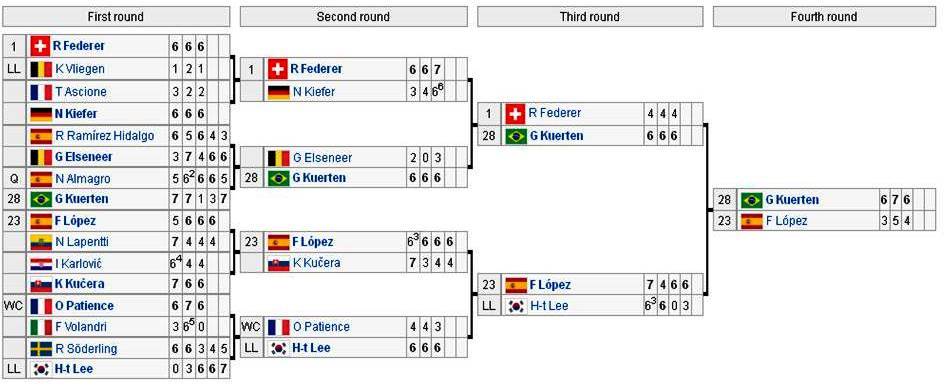
Second to the final, the most memorable result of the 2004 French Open was Gustavo Kuerten’s 4, 4, an 4 win over world No. 1 Roger Federer. Kuerten was still just 28 years old, but injuries were already catching up with him and he had lost relatively early at RG in 2002 and 2003 after winning the title in 1997, 1998, and 2001. The Brazilian never won another match at the French Open after this year. Ranked No. 123 in the world, Hyung-Taik Lee got in as a lucky loser (replaced Sjeng Schalken, who withdrew due to a virus). It did not help Robin Soderling, as Lee took out the Swede in five and eventually reached the third round. Lee, 28, went on to make a semifinal run at Queen’s Club and he also advanced two rounds at the U.S. Open.
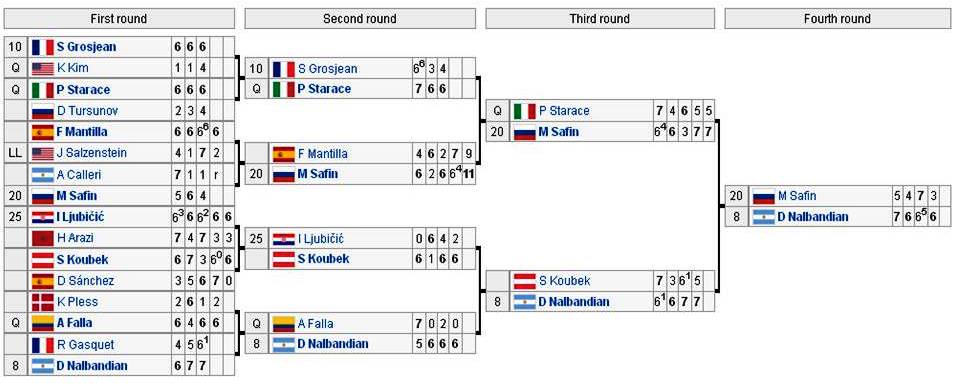 Marat Safin pulling down his shorts after an incredible point in round two against Felix Mantilla is all you really need to remember about this section of the draw.
Marat Safin pulling down his shorts after an incredible point in round two against Felix Mantilla is all you really need to remember about this section of the draw.
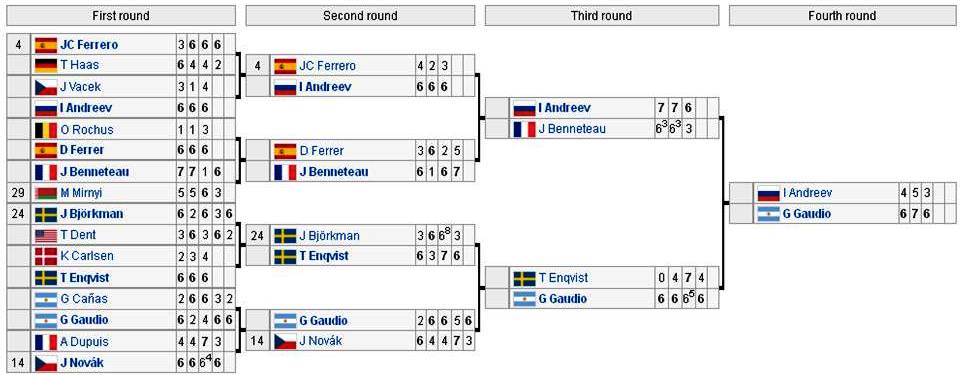 Gaston Gaudio’s run to the title almost never got off the ground. He had to come back from two sets to one down in the first round against fellow Argentine Guillermo Canas. He also needed five in his second match against Jiri Novak. And check out the top of this section, too. Juan Carlos Ferrero vs. Tommy Haas in the first round…. Brutal. And how did Igor Andreev beat the defending champion in straight sets?
Gaston Gaudio’s run to the title almost never got off the ground. He had to come back from two sets to one down in the first round against fellow Argentine Guillermo Canas. He also needed five in his second match against Jiri Novak. And check out the top of this section, too. Juan Carlos Ferrero vs. Tommy Haas in the first round…. Brutal. And how did Igor Andreev beat the defending champion in straight sets?
 Who knew Martin Verkerk wasn’t a one-tournament wonder? Okay, he was. Still, it’s hard to believe he even made it back to the third round one year after finishing runner-up to Ferrero. It’s also hard to believe he took Lleyton Hewitt to five sets. And how about this run by Xavier Malisse? The X-Man had reached the Roland Garros fourth round once before but he has since never even made it past the second round in Paris. Wins over No. 7 seed Rainer Schuettler and 2002 champion Albert Costa (8-6 in the fifth) were improbable and impressive.
Who knew Martin Verkerk wasn’t a one-tournament wonder? Okay, he was. Still, it’s hard to believe he even made it back to the third round one year after finishing runner-up to Ferrero. It’s also hard to believe he took Lleyton Hewitt to five sets. And how about this run by Xavier Malisse? The X-Man had reached the Roland Garros fourth round once before but he has since never even made it past the second round in Paris. Wins over No. 7 seed Rainer Schuettler and 2002 champion Albert Costa (8-6 in the fifth) were improbable and impressive.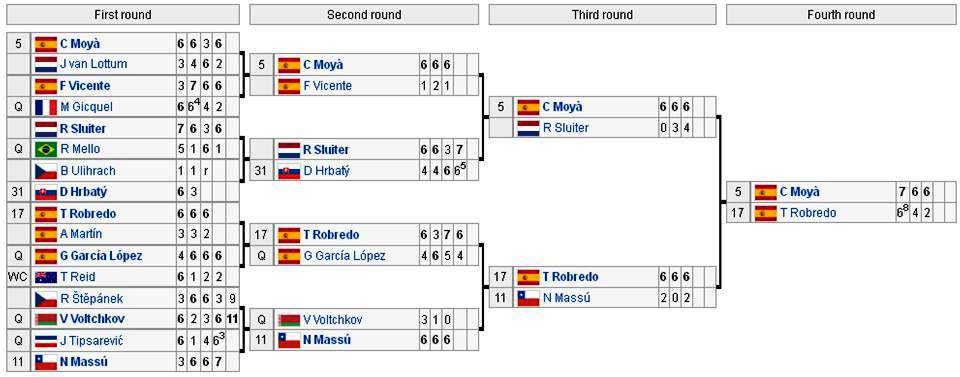 Note the four qualifiers in this section. All four–Marc Gicqel, Ricardo Mello, Guillermo Garcia-Lopez, and Janko Tipsarevic–were still active in 2013. Three of them are still active now (Mello retired at the Brasil Open in February). As for the tennis in this eighth of the bracket, it was entirely uninteresting. Carlos Moya, 28 at the time and five years removed from his Roland Garros triumph, was simply too good for the rest of the field.
Note the four qualifiers in this section. All four–Marc Gicqel, Ricardo Mello, Guillermo Garcia-Lopez, and Janko Tipsarevic–were still active in 2013. Three of them are still active now (Mello retired at the Brasil Open in February). As for the tennis in this eighth of the bracket, it was entirely uninteresting. Carlos Moya, 28 at the time and five years removed from his Roland Garros triumph, was simply too good for the rest of the field.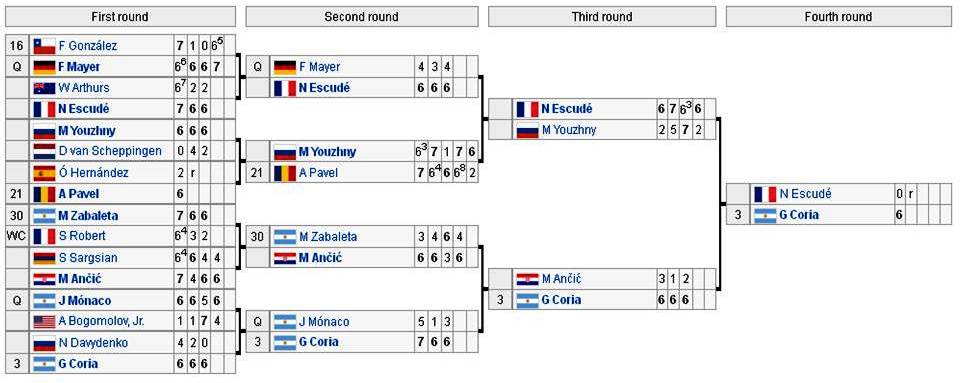 Coria was borderline dominant on clay in 2003 and 2004. In ’03 he won three titles on the slow stuff and had two runner-ups. He probably should have won the French Open, or at least reached the final. In ’04, the Argentine won Monte-Carlo and reached the Hamburg final. Look no further than his path through this Roland Garros draw to see what kind of form he remained in; no sets lost through the first four rounds and not even a single tiebeaker played. As for Coria’s expected quarterfinal opponent, Fernando Gonzalez went out in the first round. Gonzo was wildly inconsistent at that point in his career (he was never particularly consistent at any point in his career, for that matter), but a loss to qualifier Florian Mayer was especially disastrous.
Coria was borderline dominant on clay in 2003 and 2004. In ’03 he won three titles on the slow stuff and had two runner-ups. He probably should have won the French Open, or at least reached the final. In ’04, the Argentine won Monte-Carlo and reached the Hamburg final. Look no further than his path through this Roland Garros draw to see what kind of form he remained in; no sets lost through the first four rounds and not even a single tiebeaker played. As for Coria’s expected quarterfinal opponent, Fernando Gonzalez went out in the first round. Gonzo was wildly inconsistent at that point in his career (he was never particularly consistent at any point in his career, for that matter), but a loss to qualifier Florian Mayer was especially disastrous.
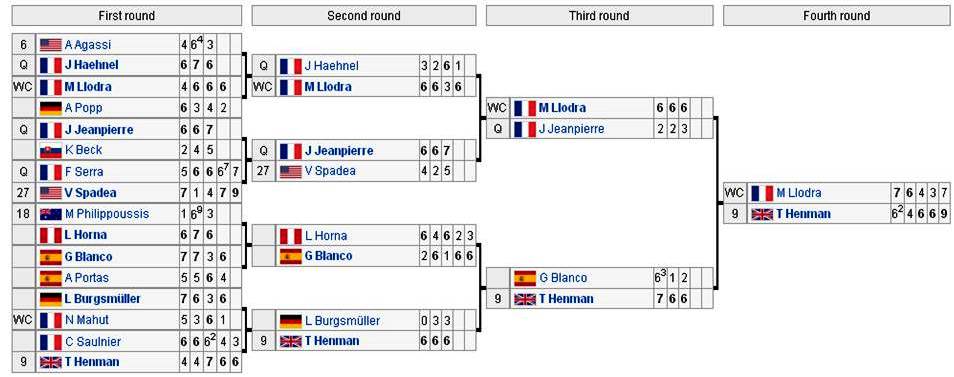 If you can’t believe Tim Henman was good on clay, you aren’t alone. Sure, he wasn’t a tragic hero at Roland Garros like he was at the All-England Club–he wasn’t any kind of hero–but he was decent to say the least. Henman reached the third round twice before 2004 then went all the way to the semis in this tournament. Note that he needed to make a comeback from two sets down just to reach the second round. A good draw also helped (he faced wild card Michael Llodra in the fourth round, a match that ended 9-7 in the fifth). He also played Milos Raonic’s current coach in the third round. And yes, this was also the year Andre Agassi lost to Jerome Haehnel.
If you can’t believe Tim Henman was good on clay, you aren’t alone. Sure, he wasn’t a tragic hero at Roland Garros like he was at the All-England Club–he wasn’t any kind of hero–but he was decent to say the least. Henman reached the third round twice before 2004 then went all the way to the semis in this tournament. Note that he needed to make a comeback from two sets down just to reach the second round. A good draw also helped (he faced wild card Michael Llodra in the fourth round, a match that ended 9-7 in the fifth). He also played Milos Raonic’s current coach in the third round. And yes, this was also the year Andre Agassi lost to Jerome Haehnel. 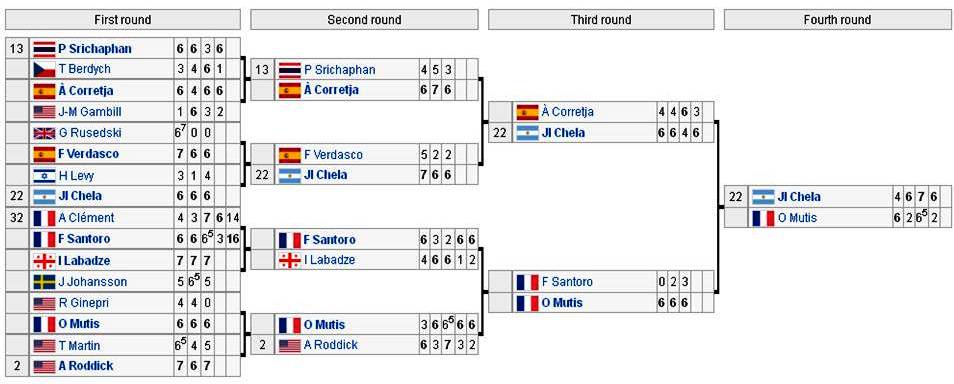 This was the start of the United States’ demise of epic proportions on the red clay of Roland Garros. Agassi, who won the title in 1999, reached the quarterfinals in 2003. One year later, not a single American man reached the third round and only two–Andy Roddick and Vince Spadea–reached the second round. At least one had to, because Roddick played Todd Martin in round one. Spadea was the only American to beat a foreigner and he needed a 9-7 in the fifth scoreline to get past Florent Serra. Of all the Roddick French Open blunders, this may have been the worst. Seeded second, he lost to Olivier Mutis in the second round. Mutis was ranked 125th at the time and never climbed higher than No. 71. The Frenchman won only a single French Open match throughout the entire rest of his career aside from 2004. Also, note the interesting first-round matchup featuring Paradorn Srichaphan and an 18-year-old Tomas Berdych. This was Berdych’s third career slam and first in which he lost in the opening round. Less than three months later, the teenager beat Federer at the Athens Olympics.
This was the start of the United States’ demise of epic proportions on the red clay of Roland Garros. Agassi, who won the title in 1999, reached the quarterfinals in 2003. One year later, not a single American man reached the third round and only two–Andy Roddick and Vince Spadea–reached the second round. At least one had to, because Roddick played Todd Martin in round one. Spadea was the only American to beat a foreigner and he needed a 9-7 in the fifth scoreline to get past Florent Serra. Of all the Roddick French Open blunders, this may have been the worst. Seeded second, he lost to Olivier Mutis in the second round. Mutis was ranked 125th at the time and never climbed higher than No. 71. The Frenchman won only a single French Open match throughout the entire rest of his career aside from 2004. Also, note the interesting first-round matchup featuring Paradorn Srichaphan and an 18-year-old Tomas Berdych. This was Berdych’s third career slam and first in which he lost in the opening round. Less than three months later, the teenager beat Federer at the Athens Olympics.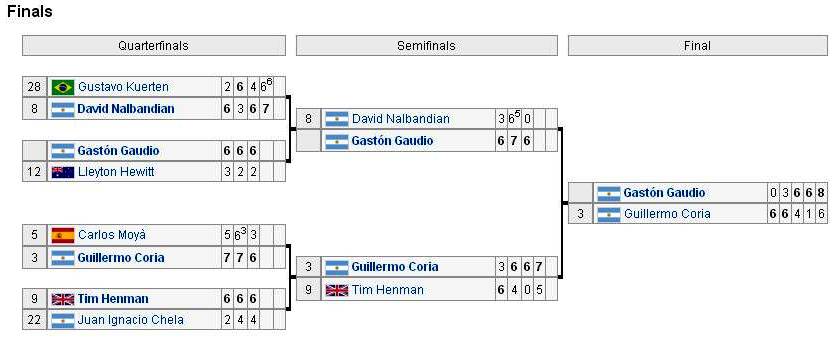 From start to just about the finish, the last seven matches of the 2004 French Open provided little drama. Only one quarterfinal clash went to four sets and the two semis combined for seven sets, two which resulted in bagels. The final seemed to be on an even more routine path with Coria leading Gaudio 6-0, 6-3, 4-3. That’s when the crowd started the wave (1:29 mark of the match replay), which actually proved to be the turning point. Gaudio, who eventually saved two championship points, stormed back to win one of the most dramatic finals in Roland Garros history.
From start to just about the finish, the last seven matches of the 2004 French Open provided little drama. Only one quarterfinal clash went to four sets and the two semis combined for seven sets, two which resulted in bagels. The final seemed to be on an even more routine path with Coria leading Gaudio 6-0, 6-3, 4-3. That’s when the crowd started the wave (1:29 mark of the match replay), which actually proved to be the turning point. Gaudio, who eventually saved two championship points, stormed back to win one of the most dramatic finals in Roland Garros history.
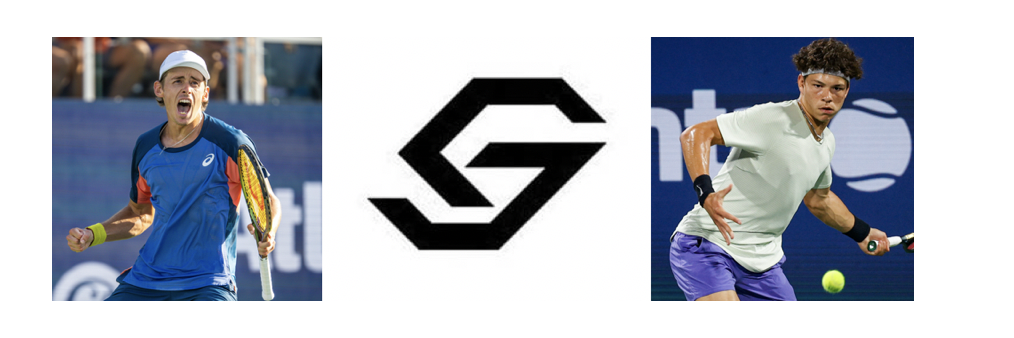

Something that catches my attention that isn’t mentioned is that this was a golden chance for Nalbandian to make another GS final. He did the tough job of beating Kuerten (I’d safely call this Guga’s last quality match) but really wasn’t there for much of the Gaudio match when he was so heavily favored.
Though it’s still funny to this day that the semifinalists were three Argentines and a Brit.